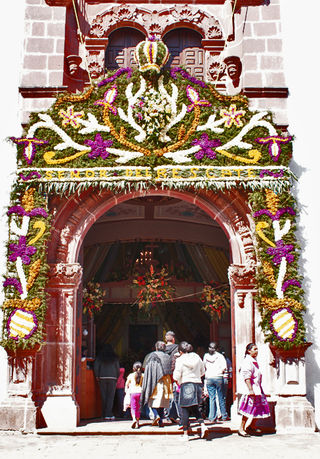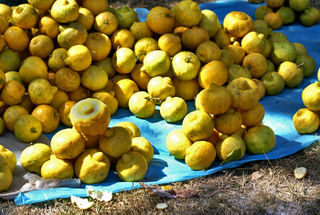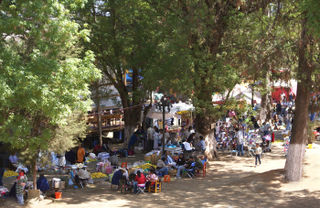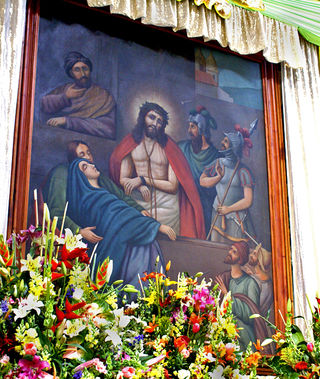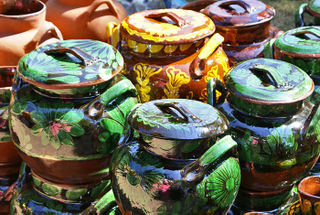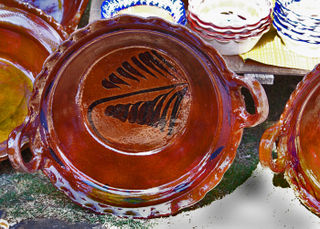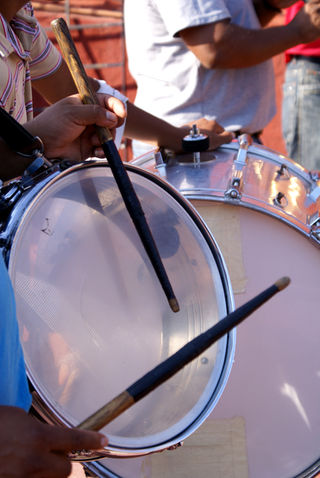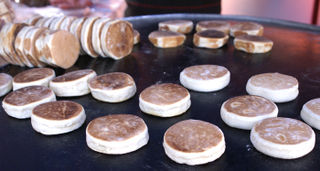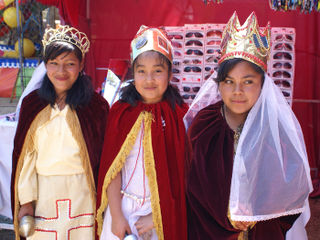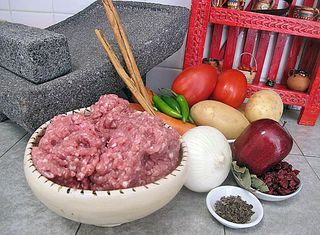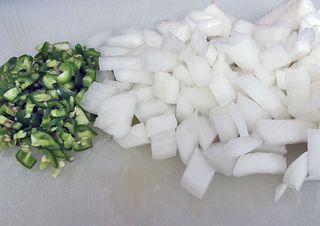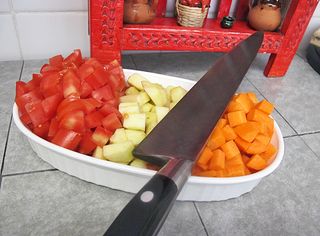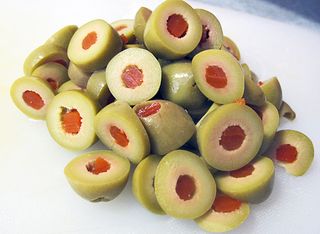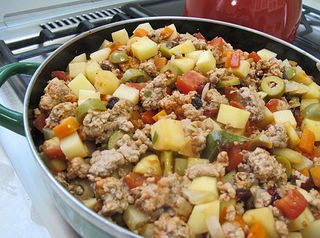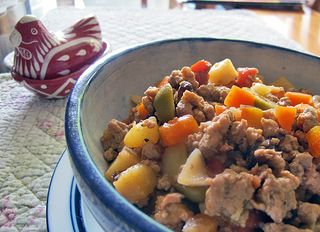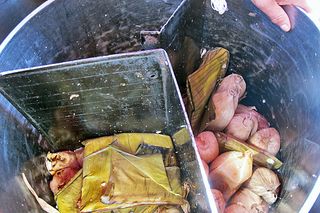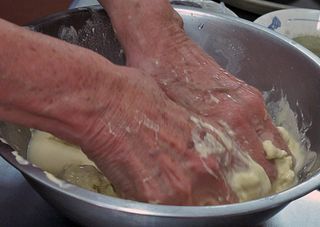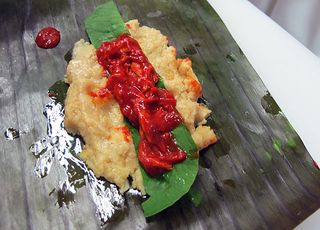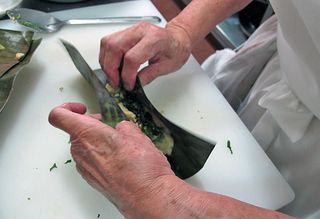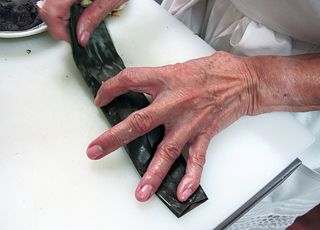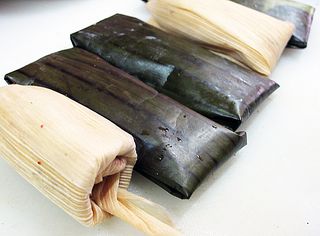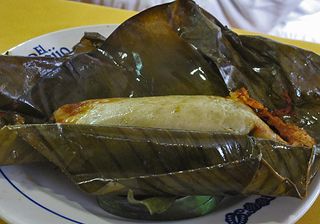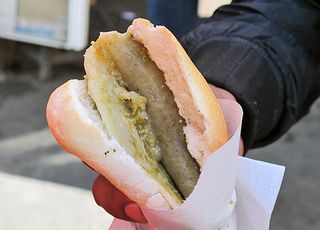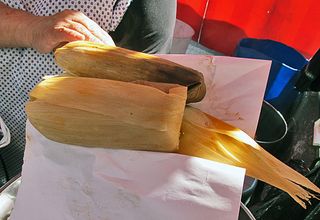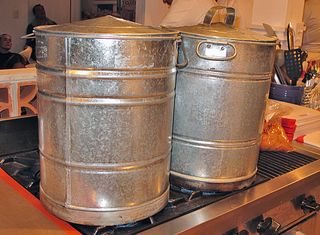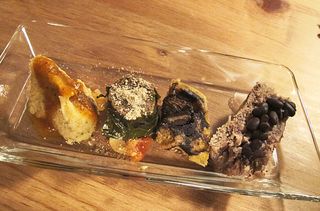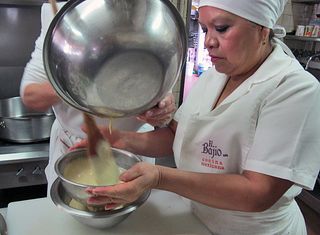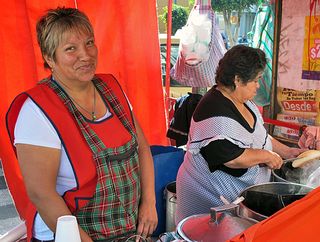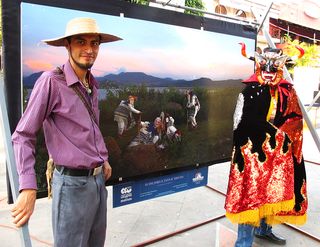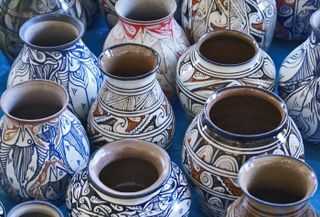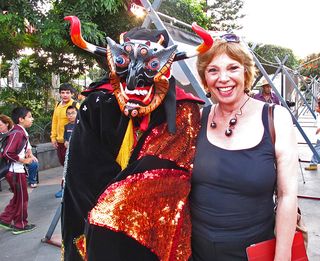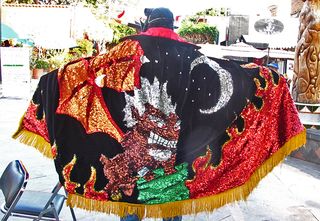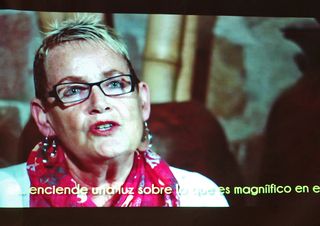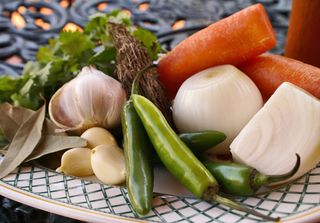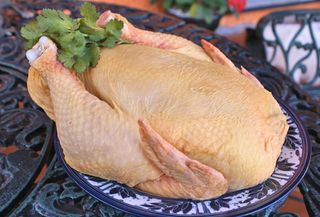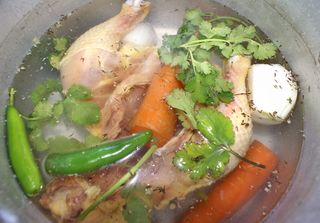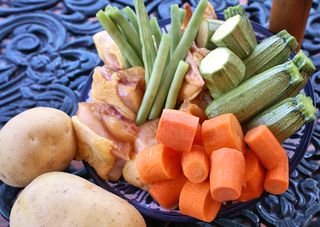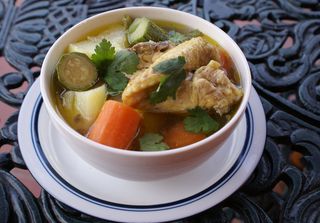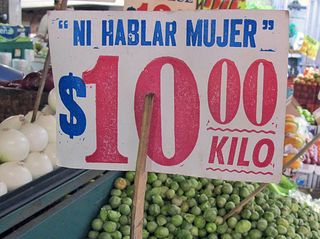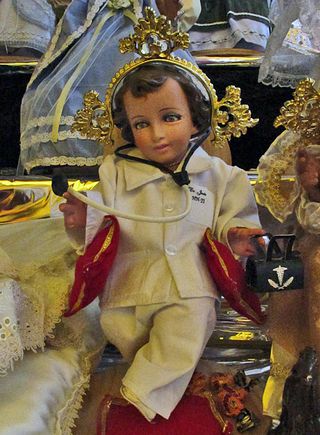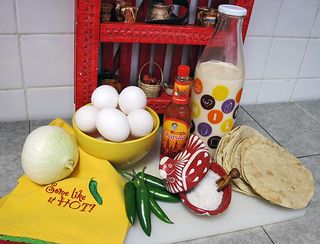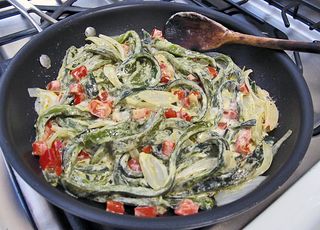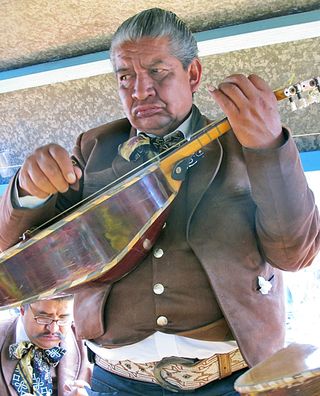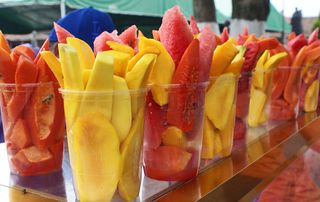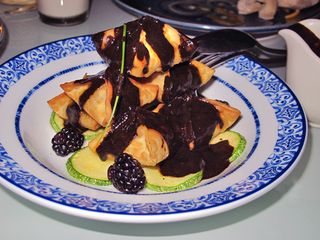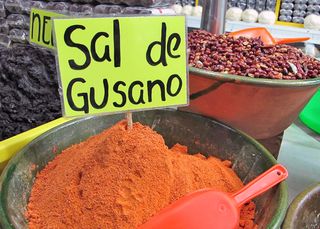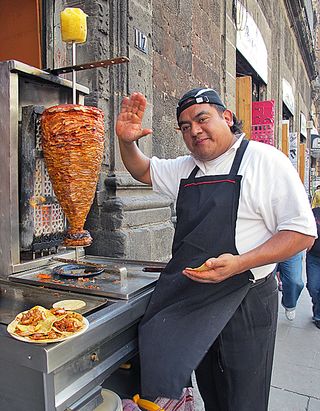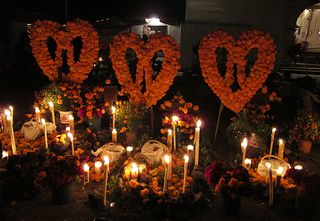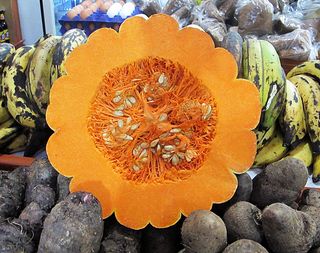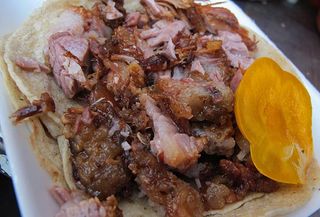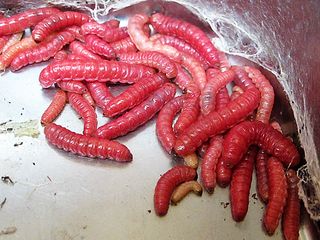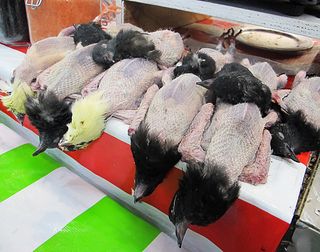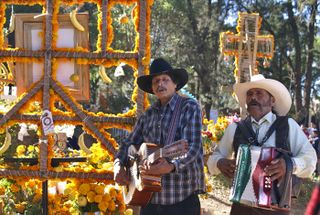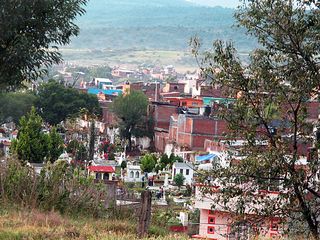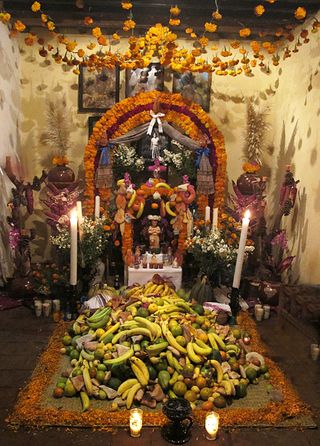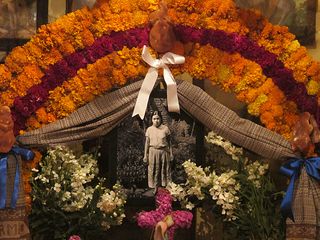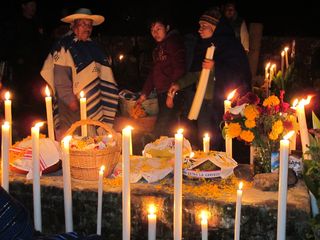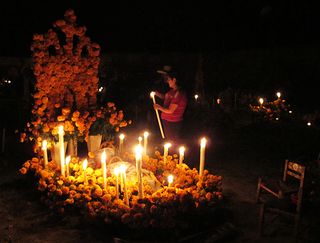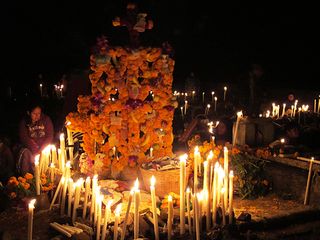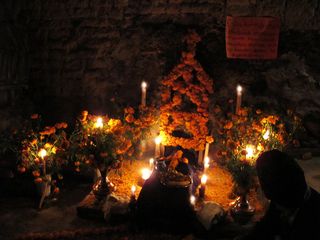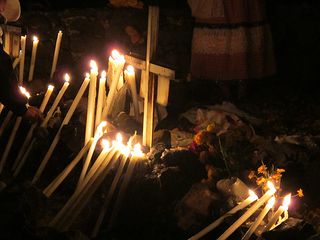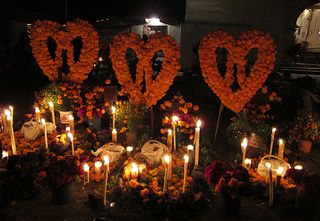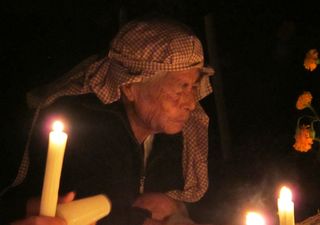Originally published in October 2011, this illustrated recipe for Adobo de Cerdo Huasteco is a perfect meal for February's cold weather. Mexico Cooks! celebrates its seventh anniversary of publishing with this delicious meal to warm body and soul. Enjoy!

Roasting roma tomatoes and onion quarters on a comal (in this case, a cast iron griddle). That little tomato on the right looks downright happy to be toasting.
Several months ago, Mexico Cooks! was thrilled to receive a copy of Chef Ricardo Muñoz Zurita's newest recetario (cookbook), titled Verde, Blanco, y Rojo en la Cocina Mexicana. Due to the pressures of moving and settling into a new and somewhat more frenetic life in Mexico City, the very attractive book sat patiently in the kitchen bookshelf with its 150 or so brother and sister cookbooks, waiting to be chosen. 'Choose me, choose me!' it whispered each time I passed by the shelf. And finally I listened.

Serving-size pieces of maciza de cerdo (lean, fresh pork leg) simmering with onion and garlic.
My wife and I are very fond of traditional Mexican cuisine. Like most people, we have our favorite dishes. And like most people, I have a hard time breaking habits and wading into a new cookbook: it means learning a new format, a new organization of ingredients, and a new dish that I had never prepared.
The first task was reading the recipe all the way through to the end to make sure that I had all of the ingredients and utensils on hand prior to starting to cook and that I understood the order of cooking. It's really no fun at all to start the preparations and discover at the time of need that oops, there is no garlic and ouch, that one bowl I really wanted to use is full of last night's stew. You'll want to organize yourself and prepare your mise en place well before you turn on the stove.
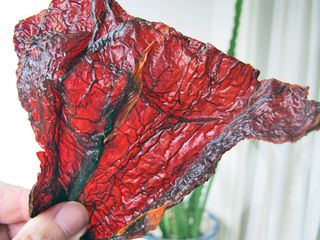
Differentiating between dried chiles ancho and chiles mulato can be confusing. If you open a chile ancho and hold it up to the light, it looks from the inside like red stained glass. The mulato, on the other hand, looks brown when held to the light. It's immediately apparent which this is.
Ingredients
2 kg (approximately 4.5 pounds) lean pork meat, cut into serving-size pieces
1 white onion, cut into quarters
1 head of garlic, split in half
4 liters water
6 tsp salt
8 chiles guajillo
5 large chiles ancho
3 large tomatos, roasted
1/2 white onion, quartered and roasted
5 garlic cloves
2 tsp ground cumin
1 tsp dry Mexican oregano, crumbled
1/2 tsp freshly ground black pepper
4 cloves
3 Tbsp pork lard (you can substitute oil if you can't get real rendered lard)
1/2 cup white vinegar
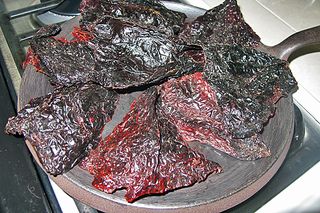
Toasting the chiles ancho on the comal.
Utensils
Comal or griddle
Mesh strainer
Several small or medium-size mixing bowls
Mixing spoons
Heavy-bottom pot with lid
Blender
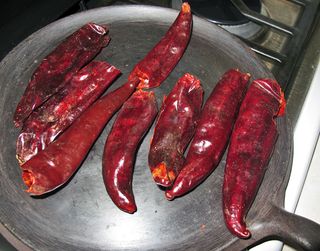
Toasting the chiles guajillo on the comal.
Procedure
Put the pork, onion, and head of garlic in a large pot. Cover with water, add 4 tsp salt and bring to a boil. Lower the heat until the water is simmering and cook until the pork is tender, about an hour. Remove the pork from the water, drain the liquid into a bowl, and reserve both the meat and the cooking liquid for later use.
Remove the stems, seeds, and veins from all of the chiles and discard them. Lightly toast the chiles on the comal, being careful not to burn them. If they turn black, they will be bitter. Soak the toasted chiles in four cups of the reserved cooking liquid from the pork.
Blend the soaked chiles with enough of the cooking liquid to make a smooth, somewhat liquid paste.
Roast the tomatoes, onions, and garlic on the comal, then blend them until they make a very smooth sauce. If necessary for blending, add just a little of the reserved meat cooking liquid. Using the wire mesh strainer, strain and reserve.
Grind the cumin, the oregano, the pepper, and the cloves together until they are powdered. Set aside for later use.
Over a high flame, heat the lard or oil in a heavy-bottomed pot until it smokes slightly. Add the ground chiles (splatter alert!) and fry for about 15 minutes or until the mixture is reduced by about one-fourth. Add the blended tomato mixture, the spices, and two tablespoons of salt. When the mixture comes to a boil, lower the fire and allow to simmer until the sauce has reduced a little.
Add the meat, the vinegar, and three cups of the reserved meat cooking liquid. Correct the seasonings and cook with the lid ajar over low heat (or bake covered in a 350° oven) for about an hour. The finished sauce should be thick enough to cover the meat without sliding off the pieces.
Serves 12.
The finished recipe also freezes very well. Mexico Cooks! served half the recipe as comida for six and froze the rest for a later meal.
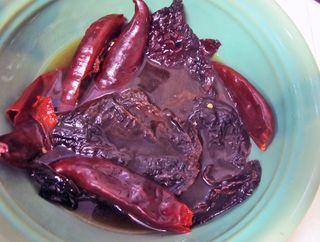
Both types of toasted chiles then soaked for a few minutes in some of the freshly cooked hot pork broth.
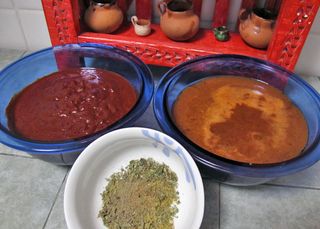
The mix of various seasonings (foreground), the blended and strained chiles (left rear) and the blended tomato/onion/garlic mixture (right rear).
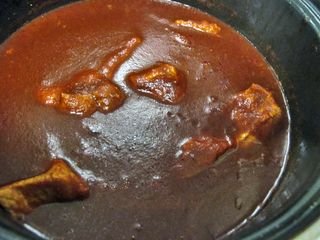
The pork now needs to simmer in the adobo for an hour or more, either in the oven or over a very low fire. The fragrance will drive you crazy, it is so tantalizing. Mexico Cooks! prepared this recipe on top of the stove using the cast iron comal as a heat diffuser.
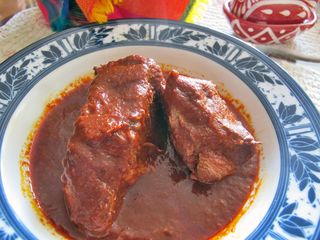
Adobo de cerdo huasteco, ready to eat! Serve the dish with steamed white rice and plenty of hot-off-the-comal corn tortillas.

The wonderful Spanish-language Verde, Blanco, Rojo en La Cocina Mexicana, by my friend Chef Ricardo Muñoz Zurita of Restaurante Azul/Condesa.
Looking for a tailored-to-your-interests specialized tour in Mexico? Click here: Tours.
